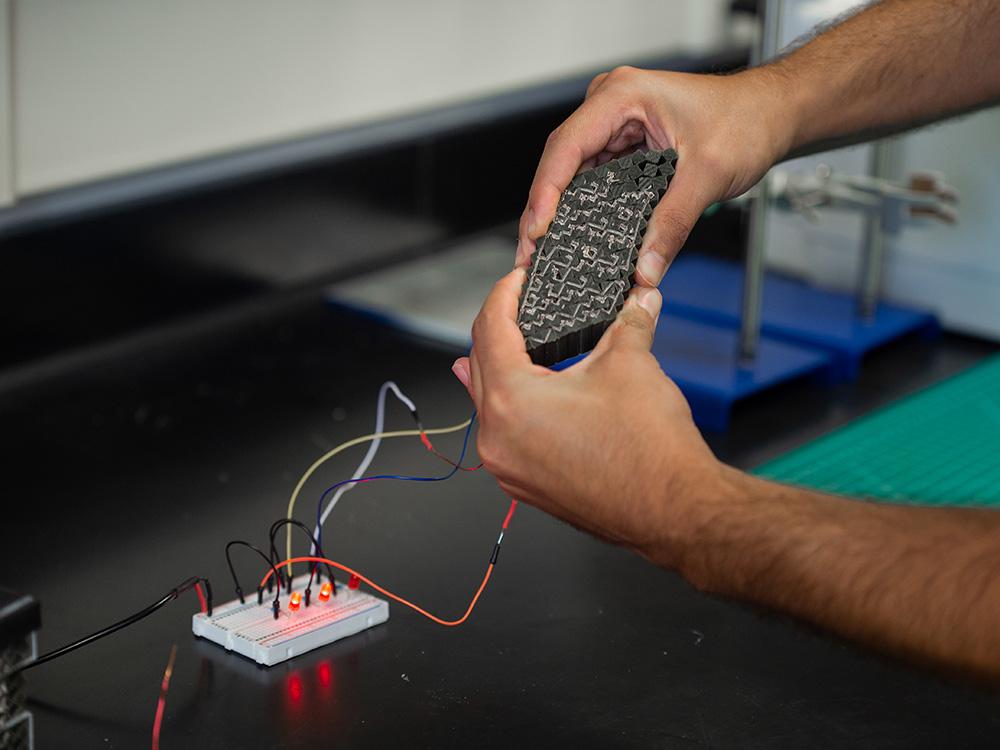This soft polymer material "acts like a brain."
Researchers at the US Air Force and Penn State University, Pennsylvania, have harnessed mechanical information processing and integrated it into an engineered material that can "think."
Scientists built on research dating back to 1938, and harnessed mechanical information processing, and integrated it into an advanced form of material.
"We have created the first example of an engineering material that can simultaneously sense, think and act upon mechanical stress, without requiring additional circuits to process such signals," said Ryan Harne, an associate professor of mechanical engineering at Pennsylvania State University.
"The soft polymer material acts like a brain that can receive digital strings of information that are then processed, resulting in new sequences of digital information that can control reactions."
The research team found that "nearly any material" available to humankind can be used to create integrated circuits capable of carrying out computing operations.
Human brain-like material
The technology, which can be compared to a human brain, is based on integrated circuits, which typically rely on silicon semiconductors to process information.
Reconfigurable circuits are used in the material's operation so that external stimuli can be captured and converted into electrical information, which can then be processed to produce output signals.
However, it may also be used to detect radio frequencies to send light signals for applications like autonomous search-and-rescue systems. The scientists showed the material's capabilities by having it perform sophisticated arithmetic.
It might even be included in bio-hybrid materials that can locate, separate, and eliminate airborne infections.
Researchers aim to augment the sense of 'touching'
Now, the researchers want to improve the substance so that it can interpret visual data similarly to how it "feels" physical signals.
"We are currently translating this to a means of 'seeing' to augment the sense of 'touching' we have presently created," said Harne.
"Our goal is to develop a material that demonstrates autonomous navigation through an environment by seeing signs, following them and manoeuvering out of the way of adverse mechanical forces, such as something stepping on it."
Charles El Helou, a doctorate candidate in mechanical engineering at Penn State, as well as Benjamin Grossman, Christopher E. Tabor, and Philip R. Buskohl from the US Air Force Research Laboratory, are other authors of the paper.
The US Air Force-funded research first appeared in Nature, a weekly international journal publishing peer-reviewed research.
 Reviewed by Explore With Us
on
August 25, 2022
Rating:
Reviewed by Explore With Us
on
August 25, 2022
Rating:





No comments: